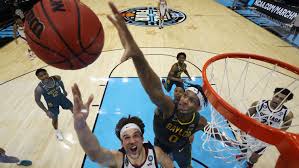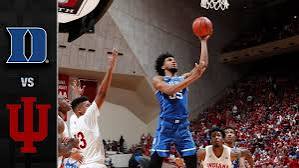It was only a matter of time.
For decades, college athletes have been told how long they could play, where they could play, and under what conditions. But now, the walls are shaking. The NCAA’s long-standing eligibility rules are facing one of their strongest challenges yet — and it’s coming from an unlikely alliance.
Players from two of college football’s fiercest rivals, Duke and North Carolina, have joined forces off the field to take the NCAA to court. In a lawsuit filed in Durham County, UNC wide receiver J.J. Jones and Duke linebacker Cameron Bergeron, along with fellow athletes Ryan Smith and Tre’Shon Devones, are demanding a change to the rulebook — specifically, the rule that allows players to participate in four seasons over a five-year window.
On the surface, it may seem like a standard challenge to a policy. But dig deeper, and it becomes clear: this is about far more than just playing time. This is about opportunity. About money. About the chance to cash in while it matters.
Injuries vs. Opportunity
Each of the players involved in the suit has had their career disrupted by injuries — a reality that’s all too common in football. These setbacks didn’t just keep them off the field; they may have cost them future earnings, exposure, and possibly a shot at the NFL.
The lawsuit doesn’t mince words. It argues that the NCAA’s current rule fails to account for the real-life impact of injuries, unfairly capping athletes’ opportunities to perform and develop. More critically, the plaintiffs assert that by preventing them from utilizing additional eligibility time, the NCAA is limiting their earning potential — particularly in today’s NIL (Name, Image, Likeness) landscape, where a college star can earn more than a late-round NFL pick.
The players aren’t just seeking policy reform; they’re asking the court to force Duke and UNC to honor extended eligibility for the 2025–26 season.
The Changing Landscape of College Sports
Let’s be honest: the concept of a student-athlete has changed dramatically over the last few years. NIL deals have rewritten the playbook, giving college athletes a taste of professional earnings — and power — before ever going pro.
That’s why this lawsuit hits at such a pivotal moment. These players aren’t just fighting for an extra year on the field. They’re fighting for the right to maximize their worth while the spotlight is still on them.
Think about it: a standout college player can now rake in hundreds of thousands, even millions, through endorsements, social media, and sponsorships. For some, staying in school another year makes more financial sense than declaring for the draft and hoping to land a spot on an NFL roster.
Cracks in the NCAA Armor
The NCAA has long prided itself on structure, tradition, and control. But with lawsuits like this, those foundations are starting to crack. If the courts side with the players — especially high-profile ones from big-name programs — it could pave the way for a wave of eligibility challenges across the country.
And that’s what makes this case such a big deal. It’s not just about four players. It’s about rewriting the narrative of who controls college sports — the institutions or the athletes.
Behind the NCAA’s curtain, there’s a shifting power dynamic. And for once, it’s leaning toward the players.
Because the truth is, in today’s college football landscape, potential isn’t just about talent. It’s about timing, money, and control. And these athletes aren’t waiting for the system to change — they’re taking it to court.













